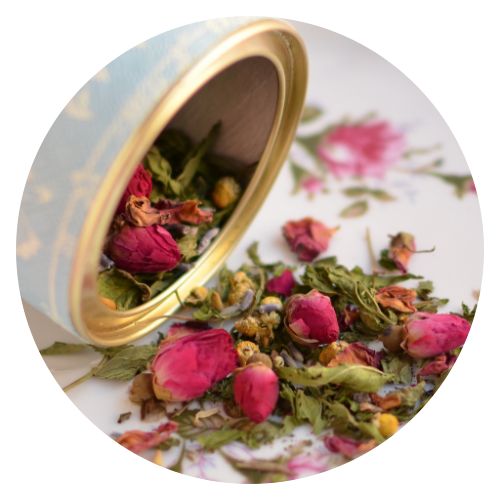Candida, a yeast fungus, normally exists in small amounts in your mouth and intestines where it aids in digestion. When in balance, candida actually helps your body to function correctly. The problem arrises when the levels increase, causing significant health problems. Learning how to fight candida overgrowth, symptoms, and treatment are a real benefit to healthful living. Recognizing candida overgrowth symptoms and treatment plans is the first step in setting things right.
The number of candida infections has significantly increased over the past 20 years, and continues to be on the rise. People with compromised immune systems are especially susceptible to Candida overgrowth.
It's critical to address candida overgrowth before it gets out of hand, turning into candidiasis, a severe candida overgrowth that infects the bloodstream.
Many doctors have difficulty diagnosing candida overgrowth in both men and women.
- Digestive problems that may include constipation, diarrhea, bloating, and indigestion.
- Feeling tired, worn down or suffering from chronic fatigue or fibromyalgia
- In women, vaginal itching, soreness, and redness; unusual vaginal discharge, and painful intercourse. In men, a red rash, itching and burning on the penis.
- Mood swings, depression, anxiety, and panic attacks.
- Cognitive impairment, difficulty concentrating, poor memory, lack of focus, ADD, ADHD, and brain fog
- Severe seasonal allergies
- Strong sugar and refined carbohydrate cravings
- Recurring infections of the sinuses, causing congestion, post-nasal drip, and sore throat; and urinary tract infections.
- Skin issues such as eczema, psoriasis, hives, and rashes
- A white coat on the tongue, discomfort in the mouth, sore throat, difficulty swallowing or cracking at the corners of the mouth
- Skin and nail fungal infections which include athlete’s foot or toenail fungus
- Autoimmune diseases have been linked to the overgrowth of candida.
How to Decrease Candida
1. Stop Feeding the Candida
First, Candida especially thrives on sugar. A familiar example of this may be the making of bread and the necessity to add sugar to help the yeast grow, otherwise, the bread will not rise.
Foods that feed candida:
- Sugar in all forms feeds candida. While fruit is fine when maintaining, limiting fruit intake when in the process of cleansing candida from the system is advisable. If you need a sweetener, stevia is allowed. While stevia adds sweetness, it is an herb that doesn't actually contain sugars.
- Grains and starches like rice, potatoes, beans, and legumes. These act like sugar during the digestion process.
- Dairy is a source of naturally occurring sugar in the form of lactose. Limit dairy during a cleanse.
- Alcohol should be eliminated from the diet during a cleanse, and limited when maintaining. Candida uses ethanol as a quick fuel source. The only exception here is when it comes to herbal tinctures. I could talk to you all day about why alcohol is an important component to tinctures and the best method for both herb extraction and body absorption. The long and the short of it is that the benefit far exceeds worrying about the small amount of alcohol.
2. Feed Your Body
Eating well helps keep candida in check. Organic quality meats and vegetables, and food that is rich in nutrients feed the body with nutrients that may have suffered a loss from candida overgrowth.
Make sure that you are getting enough fiber. Fiber helps to remove toxins and candida and helps your good gut microbes.
Then there are foods that actually help fight candida. Add these foods into your diet:
- Apple cider vinegar
- Garlic
- Onions
- Coconut oil
- Olive oil
- Pumpkin seeds
- Cinnamon
- Turmeric
- Oregano
- Rosemary
- Clove
- Aloe vera juice (must be without sugar)- although aloe vera contains some anti fungal properties, this isn't so much a direct fighter of candida as it is a MVP for your digestive system, which is key in fighting candida.
3. Help Your Drainage Pathways!
It is important that you flush the dying candida organisms from the body. These organisms can release toxins when they die (Herx reaction), and may make you feel unwell in the form of feeling almost flu like with congestion, headaches, fever, chills, and fatigue.
These organisms can be handled with properly functioning liver, kidney, and lymphatic drainage, as well as proper intestinal function. All too often candida overgrown can slow drainage pathways. Before and during a candida cleanse, incorporate organic teas, tinctures, and herbs that support good liver, kidney, and lymphatic drainage and intestinal moving herbs. ->Here are just some of my favorite!
4. Drink Plenty of Water
Drinking plenty of water should be a part of your daily routine anyway, but during the cleansing period it is essential for keeping the body functioning properly and keeping those drainage pathways clear. Avoid drinking water that has been treated with fluoride and other chemicals though, as it has the opposite effect on the drainage system.
5. More Strategies
Candida Killing Herbs
Candida Calm is an all natural herbal preparation for dealing with candida and parasites. It is helpful to take Candida Calm a few times throughout the day, 30-60 minutes away from food. Candida Calm Tincture is extracted using organic alcohol to get the most herbal properties possible into a form that is easily absorbed. I do not recommend dissipating the alcohol before taking this, or any other tincture, as it helps the herbs to be useful to the body, effectively and quickly entering the bloodstream, and fighting the battle of candida overgrowth with you.
Intermittent Fasting
Most of us have heard of intermittent fasting for weight loss, but it is healthful for a number of reasons, especially when it comes to counteracting the way that we often feed candida. Intermittent fasting decreases blood sugar spikes, and this can be a real ally to your digestive system and taking action against continually feeding the candida that you are trying so hard to get rid of.
Optimally eat at 16:8, which is 16 hours of fasting and 8 hours in which you may eat. During the fasting period only tea, black coffee, and water. There are no restrictions during the eating phase outside of what you should be doing to eat according to the guidelines above to help fight candida. If 16:8 seems like too much for your, you can try 14:10, which is 14 hours of fasting and 10 hours in which you may eat during a 24 hour period.
How Long to Cleanse Candida?
The answer lies in a combination of factors including how long you have had an overgrowth of candida, how far it has spread through your body, and how aggressive you are in the cleansing phase of the candida overgrowth symptoms and treatment plan.
As a very general timeframe for those who stick with the protocol will find relief in a month, some as little as a week or two. This does not mean, however, that the candida overgrowth is completely gone. Truly dealing with the overgrowth can take 3-6 months.
Maintenance Phase
To maintain normal candida levels continue to live a lifestyle where you avoid feeding candida as much as possible, and keep those elimination pathways clear. Continue to add things in your diet that help fight against candida. It is helpful to take a maintenance dose of Candida Calm Tincture once daily and to take Detox Me Tincture for a two week period every 2-3 months.
Remember, this is a lifestyle change. Give yourself the grace of doing the very best that you can, limiting foods that feed candida and incorporating those candida fighting foods, herbs, and spices as much as possible. -> Here are just some of my favorite!



